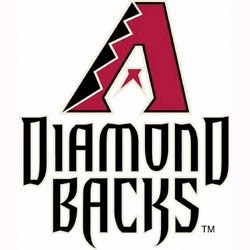 Salt River Fields at Talking Stick, the new spring-training home of the Arizona Diamondbacks and Colorado Rockies, achieved a significant milestone and a first for a Major League Baseball facility: It was awarded LEED Gold Certification for New Construction from the United States Green Building Council (USGBC).
Salt River Fields at Talking Stick, the new spring-training home of the Arizona Diamondbacks and Colorado Rockies, achieved a significant milestone and a first for a Major League Baseball facility: It was awarded LEED Gold Certification for New Construction from the United States Green Building Council (USGBC).
The spring-training facility, which opened in February 2011, is the first LEED Gold-certified ballpark in Major League Baseball; Target Field, Nationals Park and AT&T Park all achieved Silver certification. Owned by the Salt River Pima-Maricopa Indian Community, the complex consists of separate training facilities and clubhouses accommodating each team as well as an 11,000-seat ballpark. The project is located at Loop 101 and Indian Bend Road, on Salt River Pima-Maricopa Indian Community land.
It was designed by HKS Sports & Entertainment. Mortenson Construction was the general contractor.
Certification is based on a scoring system: the more points accumulated the higher the certification. Specific practices were in place from the start to earn the certification, including the following:
- The design emphasizes maximum shade. The venue’s location on the site and monumental roof provide relief from the southwestern sun for all patrons without compromising views and vistas to the surrounding natural landscape. Terracotta shade screens are attached to the exterior clubhouse façades to provide further shade from the sun.
- More than 85 mature trees and cacti – located throughout the site – were uprooted and replanted at the new site to provide shade for venue patrons including 35 trees, 45 creosote and nine cacti. In addition to the salvaged vegetation, 2,400 native trees were planted to provide shade and habitat.
- The majority of the venue’s exterior skin is constructed of masonry materials, harvested from the Salt River Pima-Maricopa Indian Community soil. In total, 40 percent of the building materials are derived from local suppliers and vendors.
- By incorporating as much native planting as possible into the overall site design, water is absorbed back into the ground instead of contributing to stormwater runoff. Passive water harvesting is accomplished via desert arroyos (washes) which flow throughout the site. The onsite retention pond further reduces storm water runoff as well as provides a habitat for native species. The project has calculated a 45.5 percent savings in the use of potable water through low-flow and water-efficient fixtures.
- Instead of ventilating the locker rooms from the top down, displacement ventilation – located at the base of the lockers – saves energy by supplying conditioned air in the occupied space range. In addition, strategies such as installing operable windows and maximizing occupant lighting and thermal control have contributed to the project achieving a 23.5 percent energy savings.
- Low-VOCs building materials were used when possible, ranging from paints and sealants to flooring and furniture. In addition, the buildings are designed to maximize the amount of fresh air brought in through its HVAC systems. This is regulated and measured by carbon dioxide monitors.
- Only a third of the venue’s parking lots are constructed using asphalt. The remaining 2/3 overflow parking lots are grass-covered, allowing them to double as playing fields for the community when not in use. The lots are used for overflow parking only 15 percent of the time throughout the year.
“What a great recognition this is to have Salt River Fields earn the LEED Gold Certification,” said Diane Enos, president of the Salt River Pima-Maricopa Indian Community. “It’s so gratifying to see how, in this modern and developed world, the indigenous values of adaptation to the desert and conservation are still strong and vital. From the huge shading structures over the stadium to the vibrant desert trees, plant life and open-air feel, the Fields expresses a living connection to our traditional ancestral place in this Valley. We are very pleased.”
“Working with the community, D-backs and Rockies, we designed a facility that serves as a symbol within the community, promoting and encouraging environmental stewardship,” said Byron Chambers, director of sports design, HKS Sports & Entertainment Group. “This training facility on the Salt River Pima-Maricopa Indian Community site provides a never before realized opportunity for a Major League Baseball Spring Training facility to embrace the unique beauty of the Sonoran Desert ecosystem – allowing it to be the most green and innovative spring-training facility in the nation.”
“We received numerous compliments from fans and our peers in the sports industry about Salt River Fields being the best sports training facility in the country,” said D-backs’ President & CEO Derrick Hall. “Being the first Spring Training facility to receive LEED Gold certification among sports venues is an honor all of us can be proud of while we strive to conserve our natural resources and respect the environment we live in.
“We’re honored to share the LEED Gold certification with the D-backs, the Indian Community and HKS,” said Kevin Kahn, Rockies vice president of Ballpark Operations. “Beginning with our initial plans for the Salt River Fields at Talking Stick project, our desire to preserve and protect the natural environment was a great fit with the history and culture of the Indian Community as well as Colorado’s environmental focus. Our partnership at Salt River Fields is a strong example of designing and building for today while being aware of the future impact on the land and people of the Sonoran Desert.”
—-
Share your news with the baseball community. Send it to us at editors@augustpublications.com.
Subscribers to the weekly Ballpark Digest newsletter see features before they’re posted to the site. You can sign up for a free subscription at the Newsletter Signup Page.
Join Ballpark Digest on Facebook and on Twitter!
